Chrome users can manage their saved passwords either directly within the browser or through the Google Password Manager website, allowing for easy updates and edits whenever necessary.
Using the Google Password Manager Website
The Google Password Manager website provides a centralized location to access and modify your saved passwords from any device and any web browser.
Step 1: Navigate to passwords.google.com and sign in to your Google account.
Step 2: From the list of saved passwords, locate the website for which you want to edit or update the password, and click on it.

Step 3: Click on the 'Edit' option to make changes to your username or password.
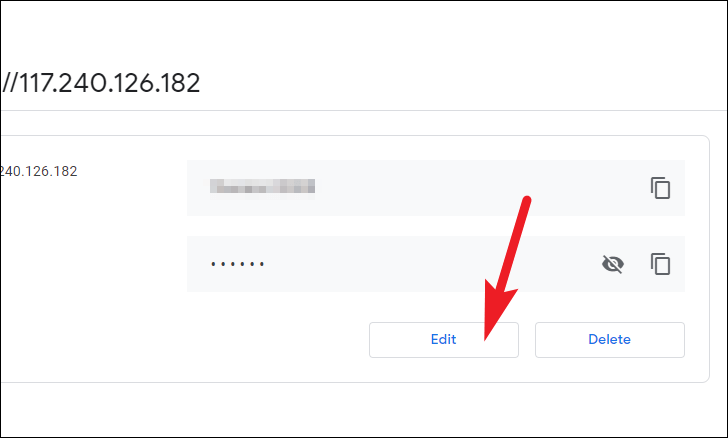
Step 4: To view your current password, click on the 'eye' icon. Make the necessary changes in the password or username fields.

Step 5: After editing, click on the 'Save' button to apply the changes.

Editing Passwords in Chrome Browser
You can also edit or update your saved passwords directly within the Chrome browser using its built-in password manager.
Step 1: Open Chrome and click on the three vertical dots (kebab menu) in the upper-right corner of the window, then select 'Settings' from the dropdown menu.

Step 2: In the Settings page, click on 'You and Google' from the left sidebar.
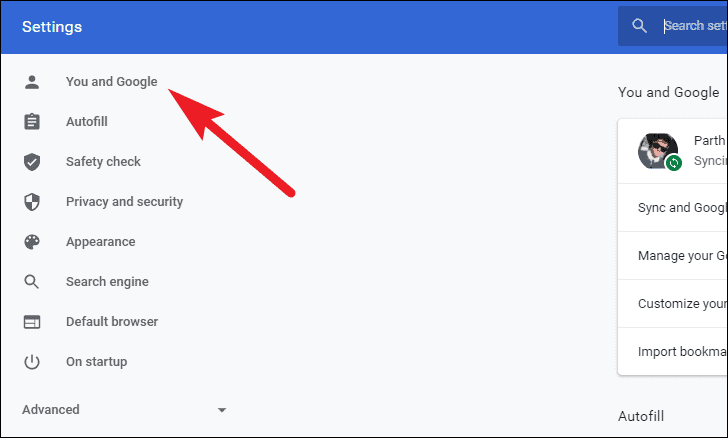
Step 3: Under the 'Autofill' section, click on 'Passwords' to view your saved passwords.

Step 4: Find the website whose password you want to edit, and click on the three vertical dots next to it.
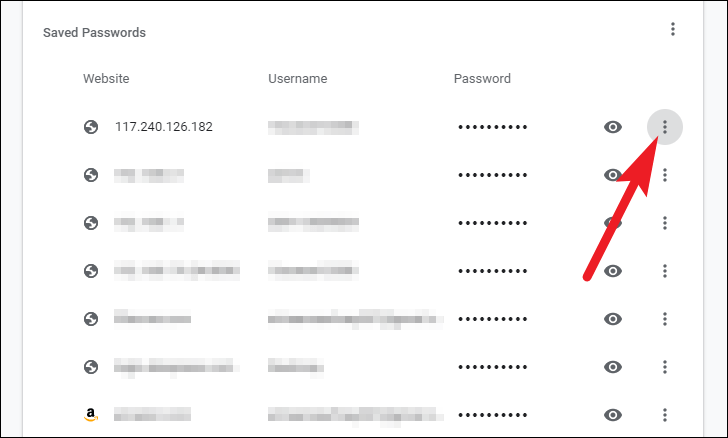
Step 5: Select 'Edit password' from the dropdown menu.
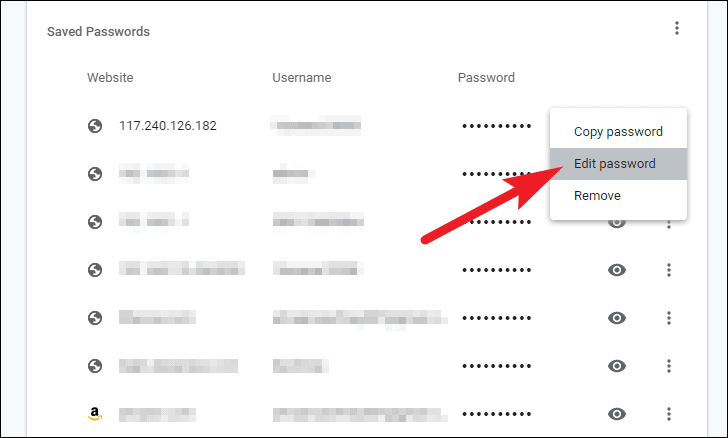
Step 6: You may be prompted to enter your computer's user account password to proceed.

Step 7: To view and edit the password, click on the 'eye' icon next to the password field. Make the desired changes to the password or username.

Step 8: Click 'Save' to apply the changes to your saved password.
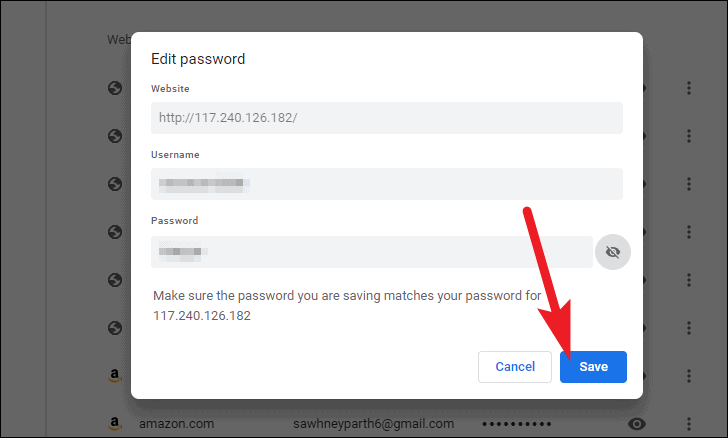
Additional Tips for Managing Passwords in Chrome
Here are some extra features to help you manage your passwords more effectively using Google's password management tools.
Check Passwords for Security
Google's Password Checkup can analyze your saved passwords to identify weak or compromised passwords and provide recommendations for strengthening them.
Step 1: In Chrome's settings, navigate to 'You and Google' as described earlier.
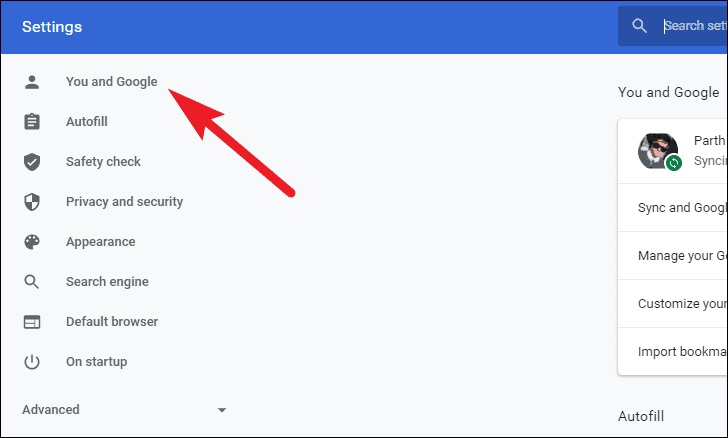
Step 2: Click on 'Check passwords' to initiate the security analysis.
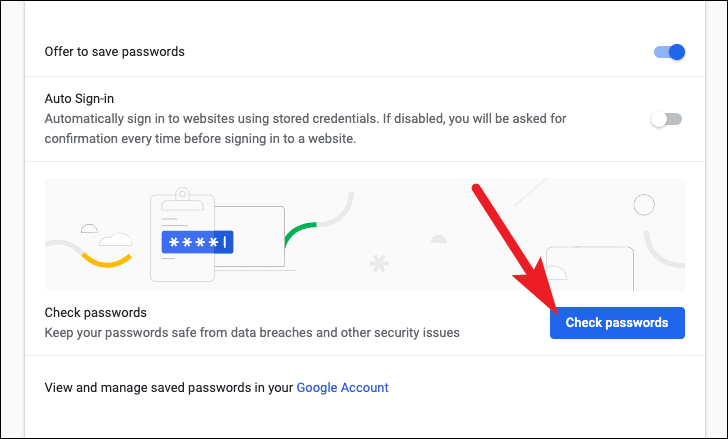
Step 3: If any issues are found, they will be listed. Click on the arrow next to each item to view details and follow the recommended steps to resolve them.

Enable Auto Sign-in
Auto sign-in allows Chrome to automatically sign you in to websites where you have saved credentials, streamlining the login process.
Note: The Auto Sign-in feature is currently only available in Chrome.
Step 1: In Chrome's settings, go to 'You and Google'.
Step 2: Toggle the switch next to 'Auto Sign-in' to enable the feature.
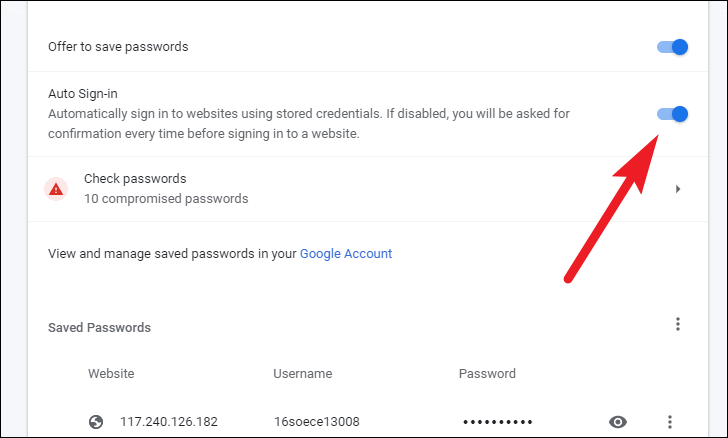
Import or Export Passwords
You can import or export your saved passwords via the Google Password Manager website, which supports CSV file format for imports.
Note: The import and export options are currently available only on the Google Password Manager website.
Step 1: Visit passwords.google.com and sign in to your account.
Step 2: Click on the 'Settings' gear icon at the top of the page.

Step 3: Choose 'Export passwords' or 'Import passwords' as needed, and follow the prompts to complete the process.

Copy Passwords Securely
If you need to log in on an unfamiliar machine, you can securely copy your login credentials from the Google Password Manager to avoid typing passwords on potentially compromised devices.
Step 1: Access the Google Password Manager at passwords.google.com and sign in.
Step 2: Select the website for which you need the password.

Step 3: Click on the 'copy' icon next to the password or username field to copy it to your clipboard, which you can then paste as needed.
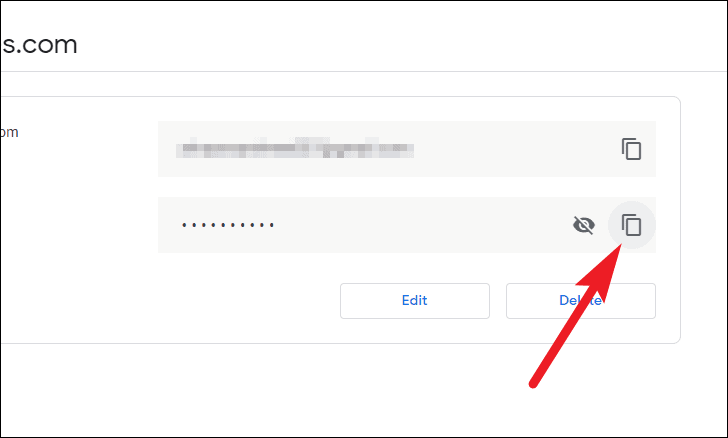
By utilizing these methods, you can efficiently edit, update, and manage your saved passwords in Chrome and the Google Password Manager, enhancing both convenience and security.











Member discussion